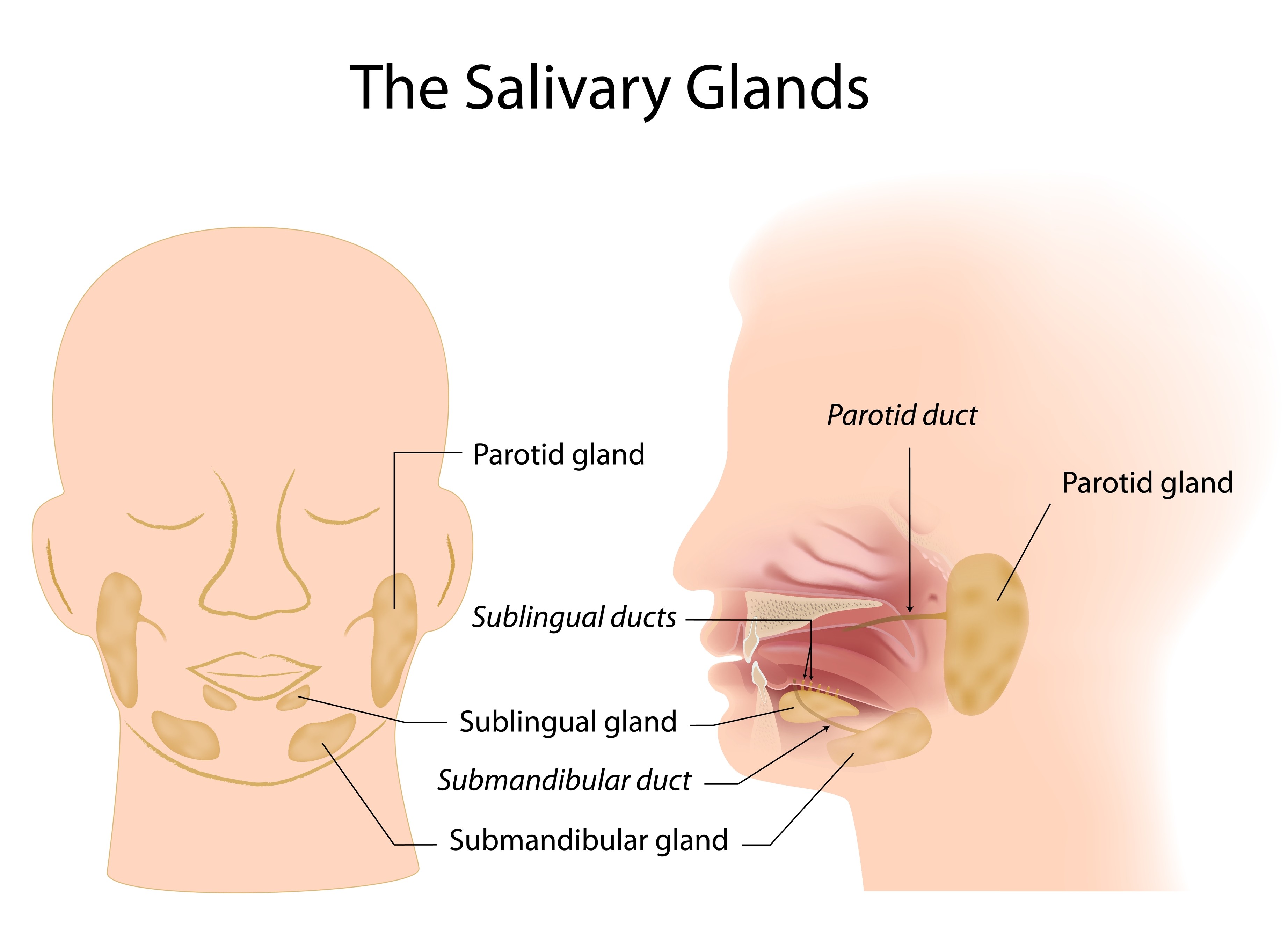Salivary Glands
Salivary glands make saliva to moisten the mouth and aid in digestion and speaking. Masses or abnormal swelling of the salivary glands are fairly common and can be benign, cancerous, or inflammatory. Here we will talk about the parotid, submandibular, and minor salivary glands.
|

|
The parotid glands are the largest salivary glands. They are paired and located just in front of each ear. Masses of the parotid glands are benign 80% of the time, malignant 20%. Your physician may offer a biopsy known as fine needle aspiration (FNA). In our practice, FNA is reserved for select cases as it does not often change treatment recommendations. The recommended treatment for most parotid gland masses parotidectomy (removal of the parotid gland). The challenge with parotid gland surgery is that the facial nerve travels right thru the gland, and even branches multiple times within the gland! The facial nerve is very important as it controls all of the muscles of facial expression (closing the upper eyelid, moving eyebrows, cheeks, upper and lower lips). This nerve must be identified and carefully dissected out of the parotid gland tissue for a successful parotidectomy. The incision is somewhat long and it may be alarming to patients when first described (it runs in front of, and then behind the ear and slightly onto the neck), but it is very similar to the incision a Plastic Surgeon would use when performing a cosmetic facelift procedure, and it tends to hear very well. An experienced surgeon is vital.
|
The submandibular glands are also paired salivary glands and can be palpated normally as soft, subtle masses in the neck at the lower edge of the jaw near the angle of the mandible. Masses of the submandibular glands are benign in 50% of cases and malignant in 50% and are typically treated surgically. A single branch of the facial nerve called the marginal mandibular nerve traverses over the submandibular gland on either side and supplies motor innervation to the lower lip on its respective side. This nerve must be dissected free from the gland and preserved during this operation.
Minor salivary glands are dispersed throughout the oral cavity, and may present as oral cavity masses or ulcers. These tumors are malignant 80% of the time and are treated surgically, simillar to squamous cell cancers of the oral cavity.
Many people present with tender swelling of the parotid or submandibular glands known as sialadenitis. Sialadenitis typically results from obstruction of the duct draining saliva from the gland to the mouth from a salivary stone or simply from dehydration leading to thickened saliva. Treatment for this is usually conservative utilizing hydration, NSAIDs (i.e. ibuprofen, naproxen, aspirin), and lemon drops to stimulate saliva. Antibiotics are not typically required, although they are often given. Surgery is reserved for chronic or recurrent cases only.